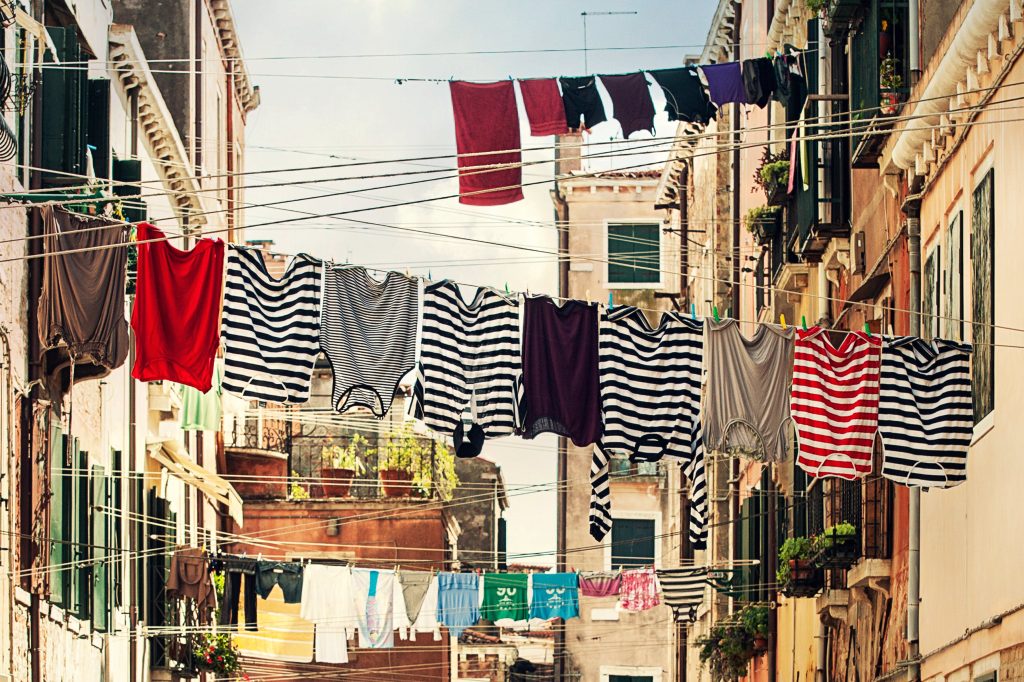In the quest for a more sustainable lifestyle, the laundry room is an excellent place to start making changes. Traditional laundry practices consume significant amounts of water and energy and often involve chemicals that aren’t kind to the environment. However, with a few simple adjustments, you can transform this routine chore into an eco-friendly practice. Here are six essential steps to make your laundry routine more sustainable:

1. Switch to Eco-Friendly Laundry Detergents and Sheets
The first step towards a greener laundry routine is to reevaluate your choice of detergent. Many conventional laundry detergents contain chemicals harmful to aquatic ecosystems and can contribute to water pollution. Eco-friendly laundry detergents and laundry sheets use plant-based, biodegradable ingredients that are much gentler on the environment. Laundry sheets, in particular, offer a convenient and waste-free alternative to traditional detergents, as they come in pre-measured strips that dissolve in water, eliminating the need for plastic bottles or containers. Furthermore, these greener alternatives often come in sustainable or recycled packaging, helping to reduce plastic waste. Making the switch is a simple yet effective way to lessen your environmental impact.
2. Embrace Cold Water Washing with Easy Iron Function
Heating water for laundry is a significant energy drain. By opting to wash your clothes in cold water and selecting the Easy Iron function on your washing machine, you can drastically reduce your energy consumption and minimise wrinkles in your clothes. The Easy Iron function holds more moisture in your clothes during the spin cycle, resulting in less creasing, which means less ironing and further energy savings. Advances in detergent formulas and washing machine technology ensure that cold water is just as effective at getting your clothes clean. This small change can lead to big savings on your energy bill and is a straightforward step toward a more sustainable household.
3. Air Dry Your Clothes
Ditching the dryer in favour of air drying is perhaps one of the most impactful steps you can take to green your laundry routine. Dryers are among the most energy-intensive appliances in a home. Air drying, whether on a line outside or on a rack inside, saves a considerable amount of energy. It’s also kinder to your clothes, preserving their colour and integrity for longer.
4. Full Loads Only
Running your washing machine only when you have a full load is an effective way to conserve both water and energy. This practice ensures that you’re maximising the efficiency of each wash, reducing the total number of loads you need to do. If you must wash a smaller batch of laundry, be sure to adjust the settings on your machine to reflect the smaller load size.
5. Use Eco-Friendly Fabric Softeners
Conventional fabric softeners can contain environmentally harmful chemicals and fragrances. Natural alternatives, such as vinegar, baking soda, or wool dryer balls, provide a more sustainable solution. Vinegar is a fantastic natural fabric softener that leaves no residue or scent behind. Baking soda helps to soften fabrics and eliminate odours, making it an excellent eco-friendly option. Wool dryer balls can reduce drying time and static without the use of chemicals, making them an eco-friendly addition to your routine.
6. Use Essential Oils as Natural Fragrance
Enhance your laundry with natural fragrances by incorporating essential oils into your routine. Add a few drops of your favourite essential oil, such as lavender, lemon, or eucalyptus, to your laundry detergent or wool dryer balls to infuse your clothes with a refreshing scent. Essential oils are a natural and chemical-free alternative to synthetic fragrances, adding a pleasant aroma to your laundry while avoiding harmful chemicals.
Conclusion
Transitioning to a more eco-friendly laundry routine is not only beneficial for the planet but can also lead to savings and healthier living conditions in your home. By implementing these six simple changes, you can significantly reduce your environmental footprint. Remember, every small step counts towards a more sustainable future. So, the next time you’re doing laundry, consider how you can make it a little greener.
Happy laundering, the eco-friendly way!

